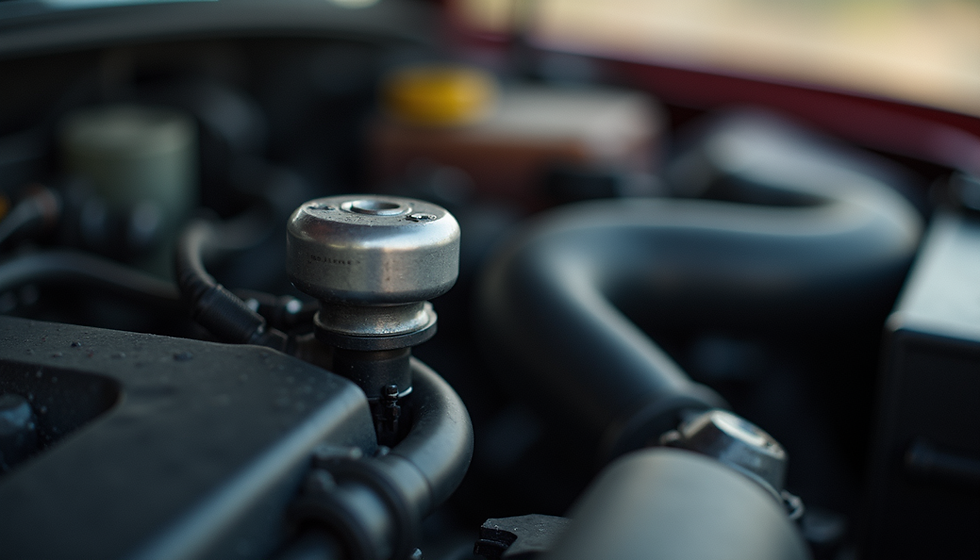How Does a Fuel Level Sensor Work?
- Autolast Ghana

- Jun 10, 2022
- 4 min read
Updated: May 7, 2024
The A1356 IC offers a framework level radiometric (yield which changes as per the inventory voltage) yield arrangement with insignificant parts. The A1356 works with inner converse battery insurance. This IC offers two-point attractive field programming to change offset and responsiveness. This permits 4 to 18 V to make up for magnet, loop, and assembling air hole resilience's.
Impelling Rod As the level of the gas or diesel in the tank changes, the float goes all over the fuel's surface. It is joined to a slender metal inciting bar, one finish of which moves with it. The pole is turned sooner or later along its length, then, at that point, the furthest edge is joined to a grounded variable resistor.
Fuel Level Sensor Bank Automobile
Be that as it may, fuel level sensors in vehicles can frequently be erroneous, particularly while driving with a full tank. In this situation, the float will ascend to the highest point of the tank, with the wiper getting back to the ground end of the resistor, bringing about a little obstruction and a high current going through the sensor. As the float drops in level, the opposition changes; however, the measure will frequently stay on 'full' for quite a while. This is on the grounds that when the gas tank is full, the float can't situate itself on top of the fuel, as it is obstructed by the tank or is restricted by the compass of the impelling bar appended to it; implying that the float becomes lowered when the tank is full. This prompts off-base readings until the fuel drops to a level where the float can sit on top, permitting protection from change.
Fuel check
The fuel sending unit is one of many terms related to this vehicle part. A few different terms utilized include sending unit, fuel source unit, gas tank sending unit, fuel level shipper unit, fuel level sending unit, fuel siphon source unit, fuel siphon sending unit, fuel check shipper unit, fuel measure sending unit, and fuel level sensor. Fortunately, these names are tradable on the grounds that they all allude to a similar part with the capacity of estimating a vehicle's fuel level.
This component is one justification for the incorrectness of fuel measures. You might have seen how your measure will in general remain on full for a really long time subsequent to topping off. At the point when your tank is full, the float is at its most extreme raised position - - its vertical development is restricted either by the bar it's associated with or by the highest point of the tank. This implies that the float is lowered, and it won't begin to sink until the fuel level drops to practically the lower part of the float. The needle on the check won't begin to move until the float begins to sink.
As the fuel level alongside the float lower in the tank, the metal pole associated with the float either moves the wiper further or nearer to the ground, which either limits or expands how much electric flow is being shipped off the fuel check. The fuel measure show drops from full as indicated by the obstruction change.
Optical strategies are extensively applied in liquid stream estimations and more uncommon in fluids level estimations. The explanation is that the estimation exactness is impacted by the elements like changes in radiation source power, and temperature awareness. Be that as it may, the new exploration progresses in this field are focused on diminishing the temperature mistake in these gadgets. An illustration of such a gadget is given in the figure underneath.

Mechanical tank sensors typically sense the place of a float, drifting on the liquid, by a mechanical linkage inside/outside the tank. Attractive tank sensors generally sense the place of a float by a mechanical linkage connected from a float to a magnet. Present-day attractive sensors depend on the Hall impact (A peculiarity that happens when an electric flow traveling through a conveyor is presented to an outside attractive field applied at a right point, where an electric potential creates in the channel at a right point to both the bearing of flow and the attractive field.).
The pressure sensors family incorporates hydrostatic, bubbler, and differential sensors. A hydrostatic tank sensor commonly faculties the tension of the liquid at the lower part of the tank. How much strain relies on the heaviness of the liquid over the sensor, which, in its turn, relies on how much liquid is in the tank.
A bubbler sensor successfully depends on the way that how much tension is expected to drive the air out the lower part of the cylinder relies on the strain at the lower part of the tank — a strain that outcomes from how much liquid is in the tank. A differential strain sensor identifies the distinction in tension between the top and lower part of a tank and makes an interpretation of that into an amount of liquid.
Electrostatic kind of sensors is addressed by capacitive and inductive. By putting fluid between the anodes, the capacity of the capacitor to store energy changes so the genuine capacitance changes. Ultrasonic level sensors work by transmitting an explosion of sound waves in an exceptionally fast grouping.
These sound waves hit the expected objective, return to the sensor, and travel at the known speed of sound. Subsequently, the hour of flight can be utilized to compute the distance. Radar, conversely, works not with sound waves, but rather with electromagnetic waves.










Comments